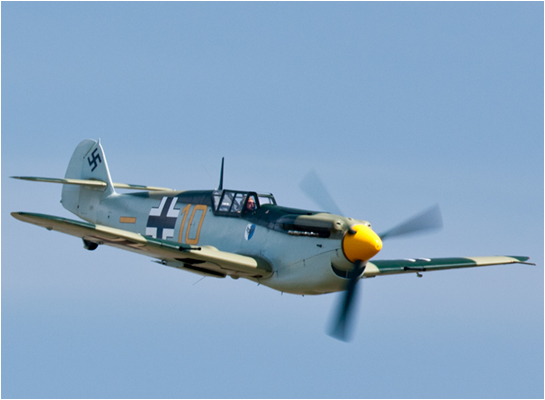

The Messerschmitt Bf109 first flew in1935, powered by a Rolls Royce Kestrel engine. The Bf109 soon saw active service, in the hands of German Condor Legion pilots, in the Spanish Civil War.
This early combat experience was extremely beneficial to Messerschmitt, revealing potential for improvements and developments in the aircraft.
By the time war came to Britain, the Bf109 was in some ways a superior aircraft to its main Royal Air Force opponent, the Supermarine Spitfire. The Bf109 had cannon armament, with greater range and punch than the Spitfires machine guns. It also had fuel injection against the early Spitfires carbureted fuel system, giving the Messerschmitt a clear advantage in negative g maneuvers.
A Messerschmitt Bf109 pilot could push the nose of his aircraft down hard to escape a pursuing Spitfire. If the Spitfire followed in the same maneuver, the Spitfires Merlin engine would be temporarily starved of fuel, giving the Messerschmitt precious moments to get clear.
The Bf109 was not quite as maneuverable as the Spitfire, particularly when it came to sustained tight turns when the advantage would go to the Spitfire.
The definitive Messerschmitt was the Bf109E, aka Emil. The Bf109E was the main German protagonist during the Battle Of Britain. However, the Bf109F is regarded as perhaps the best variant. It outclassed the Spitfire Mk V against which it was pitched.
The Bf109G was produced in the greatest numbers. All Messerschmitt Bf109s displayed potential problems for unwary or unskilled pilots, the Bf109G being particularly demanding of its pilots when landing.
.jpg)
.jpg)

.jpg)
.jpg)
.jpg)